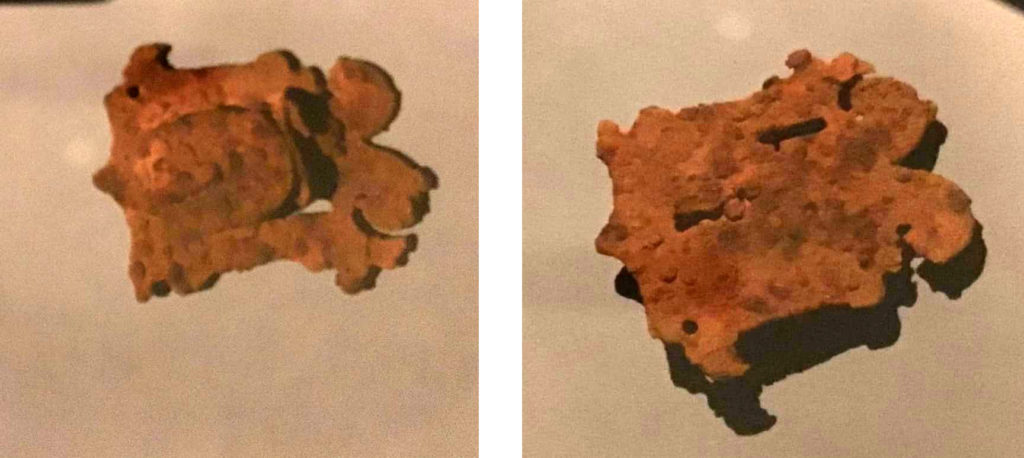
Archaeology at Fig
(Now Mission) Springs
by Gwen Thompson
| I HAD THE PLEASURE of working at Ichetucknee Springs State Park for a several years.
8-Co-1
Eight is Florida.
Co is Columbia County.
1 is for the first site recorded in Columbia.
I am always asked what was my favorite job. Well, it was being a state archaeologist.
It has been one of the most rewarding things I have ever done. Best job ever!
It was rough. We had to be at the pole barn at the park by 8 a.m. We would carpool from Gainesville to the springs.
Life was great as an archaeologist!
Gwen Thompson participated in archaeological excavations at Fig (now Mission) Springs from 1988 to 1995. Thompson has lived in Alachua County since 1959 and first visited the Ichetucknee in 1967, before it was a state park. From 2000 to 2012, she worked as a Landscape Specialist in the Butterfly Rainforest at the Florida Museum of Natural History.
The photos that I have included, below, are from February 1989. The people in the photos are Dr. John Worth, Keith Terry, Gardner Gordon, Steve Stathakis, Kristen Smith and Pia Davis. I am heartbroken that Steve Stathakis is no longer with us. His strong work ethic kept us in line and his storytelling is one of the things I miss most.

The Mill Complex has not been explored and may led to a larger component of the Spanish Mission.
Excavations on the Franciscan Frontier: Archaeology of Fig Springs Mission by Brent Richards Weisman is excellent reading and has the full story. We did have information from John M. Goggin’s work at the Fig Springs site.
The Florida Museum of Natural History has a large collection.
Other artifacts are in the R. A. Gray building in Tallahassee. John Worth has a few books on the subject.

We had long days but it was extremely rewarding. Going to the springs every day to work is working at a sacred place. The places that are most sacred to me are: Blue Hole Spring; Cedar Head Spring; Mission Spring Complex, which is comprised of a couple of springs, Roaring Spring and Singing Spring; Mill Pond. These are all the springs that were part of a Spanish Mission site for 50 years.
This complex of springs creates the Ichetucknee River that flows into Santa Fe River flowing into the Suwannee River and into the Gulf of Mexico.
Springs were considered an important resource when starting a colony. The springs provided a source of fresh water, game and fish were plentiful and soil was rich enough to provide for gardens.
This area is still an agricultural breadbasket. Peanuts and corn are two of the crops that are still raised in the area.
My favorite memories are of the fresh peach ice cream that Keith Terry’s wife, Wanda, would bring us for lunch.
Life was great as an archaeologist! Fond memories.

